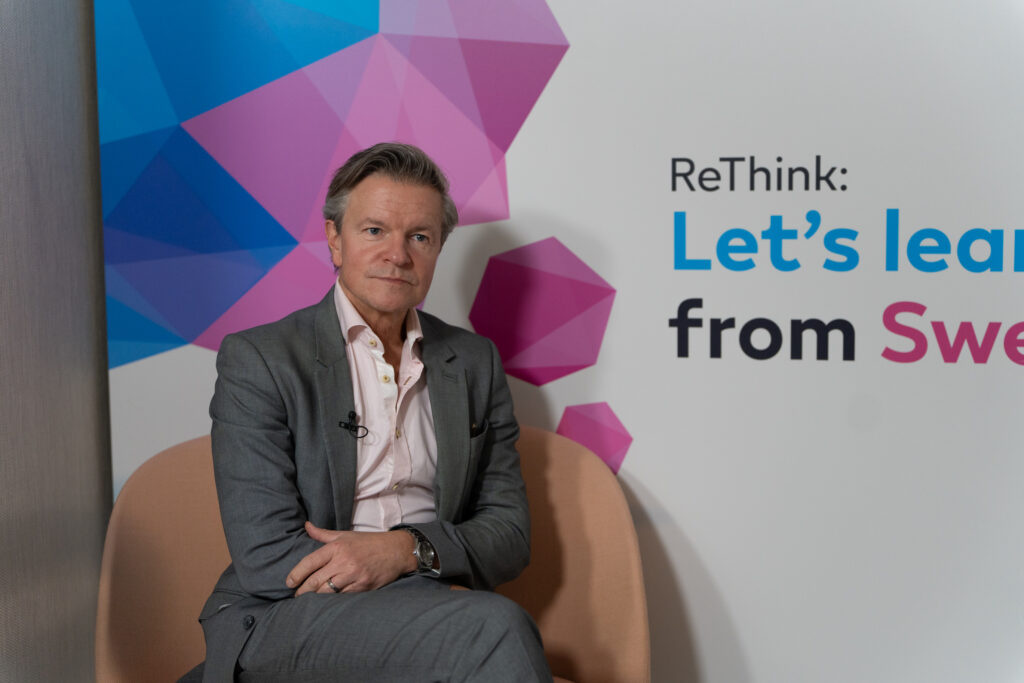The Story of Swedish Match and Their Nicotine Pouches

As part of the “ReThink: Let’s learn from Sweden” conference that was held in Belgrade, we had the opportunity to sit down and talk with Patrik Hildingsson, the Vice President for communications and public affairs of Swedish Match, about their innovative nicotine pouches and its success, the Swedish model in tobacco harm reduction and what could Serbia learn from it, as well as many other important topics.
Sweden’s success in tobacco harm reduction is well known. Could you please explain to us what sets the Swedish model apart and what Serbia could potentially learn from its approach in terms of harm reduction?
I think there are a few key elements in the Swedish model. First of all, there’s been a situation, a regulatory opportunity for companies to innovate in the alternative nicotine market. At Swedish Match we have innovated the traditional snus over the years. When we came with the tobacco pouches, snus, it really started to take on and it started to grow at the expense of cigarette smoking. Then, with the product improvements over the years and finally with the nicotine pouches, which are not based on tobacco, it has expanded the target audience among all adult smokers.
So my message here is that I don’t think one product can fit all adult smokers.
You need to have a palette of different types of products and I think that is the key. The other piece into the equation is really regulation.
If you have a situation where alternative products and innovation in that category work alongside with regulation, that actually benefits the alternatives, you can accelerate the smoking decline significantly. I think these are the two main components into the equation.
The Swedish model in tobacco harm reduction highlights the importance of innovation and regulation working together to provide quality alternatives, significantly accelerating the decline in smoking rates
I’m glad that you mentioned the health aspect of it, because Sweden is known to have one of the lowest rates of smoking related cancers in Europe. To what extent can these statistics be linked to the widespread use of oral nicotine products and could Serbia as well expect similar public health benefits by adopting these harm reduction approaches?
You can look at it from two ways. The reason why tobacco related diseases and mortality is declining and why it’s very low, among the lowest in the Western world, in Sweden, is because we don’t smoke. That’s the key reason.
So the statistics came to be like that by having people leave cigarettes. Either with that, or if they choose not to leave smoking, by choosing a far better alternative. That is really the reason for this.
I would argue then on top of that that we have had snus and now the nicotine pouches for over 200 years in Sweden. There are about more than 300 scientific independent studies that have sliced and diced the science over decades in Sweden.
The US FDA has given Swedish snus from Swedish Match a certain status where we can do certain health related claims. On top of that, the most important part is that we have the outcome, we have the end results and that is the public health statistics. So I think the case is very, very strong.
And what can Serbia learn from it?
Well, I think, first of all, the Serbian policymakers ought to really dig into Sweden and the Swedish experience and try to pick what’s good in the Swedish model and adjust it and adopt it to Serbian policymaking. Because what I know is that all countries have still quite a high smoking prevalence and in Serbia it is really high.
So I think a combination of regulation that is based on the relative risks and the toxicological profile of the product, while allowing innovation and quality alternatives to be sold to people, is the best solution.

Swedish tradition is to use oral nicotine products. On the other hand, we can say that Serbian tradition is cigarette smoking. Sincerely speaking, how optimistic can you be about the success and acceptance of these products among smoker countries such as Serbia?
I think when it comes to tobacco consumption in any country, cigarettes were the culture. If you go back to the 70s or to the 80s, every country using tobacco did choose the cigarette. So cigarettes were part of culture in Sweden as well, back then.
With that experience and knowledge, I’m absolutely sure that alternative products like pouches, but also other smokeless products, will play a role in the future, because at some point in time, the regulator will have emptied all the tools in the box and the problem of smoking will not be solved .
I mean, regulation is good, we want regulation, but you also need to give the smokers other incentives, other solutions, and therefore I’m very optimistic.
Serbia could benefit from adopting Sweden’s approach by tailoring regulations to relative risks and toxicological profiles, while fostering innovation to offer better solutions for adult smokers
For the last question, which is something that probably concerns the public the most, it’s the appeal of nicotine pouches to young people. What is the Swedish experience regarding these issues?
I’m myself a father of four, so I know parenthood and all the concerns I have for my kids. But I come back again to two things. One is that , you need to have regulation and you need to enforce the regulation. Which in this case means that you need to have age restrictions and you need to follow up on these ones.
Secondly, it’s unfortunate that there are unserious companies in any category in any field, and there is a concern of illicit trade, of course, but again, that comes back to enforcement and making a market legal rather than the opposite, stimulating black markets. So we are working very hard with our customers to ensure that our products are reaching the right audiences.
